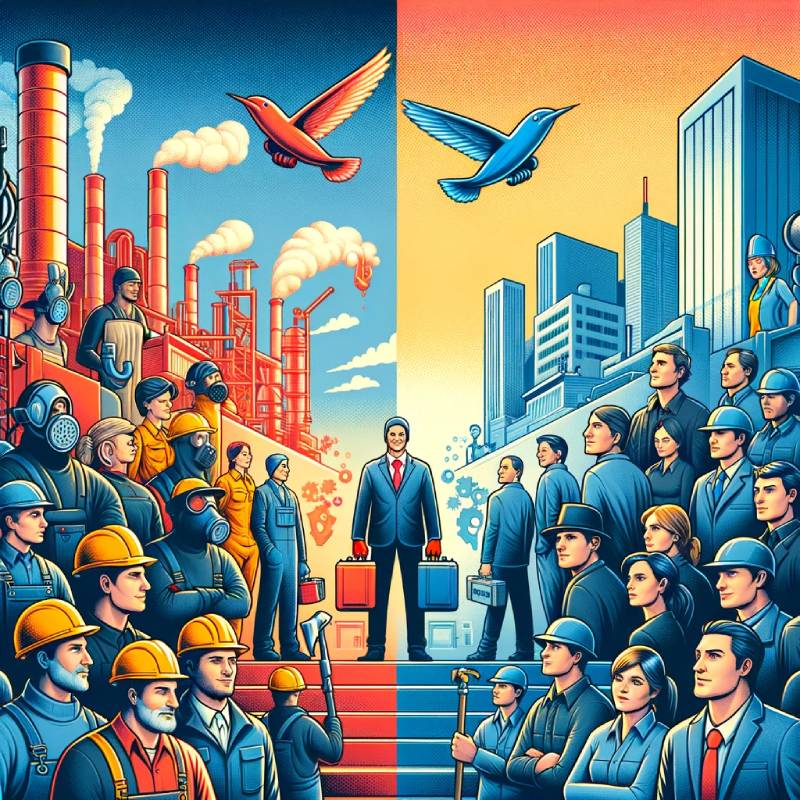Labor unions primarily aim to protect and advance the interests of their members, often through negotiating higher wages, better working conditions, and additional benefits. While these efforts can significantly benefit unionized workers, they can inadvertently cause problems for non-unionized workers in several ways:
### 1. Wage Disparity
Labor unions can create a wage disparity between unionized and non-unionized workers. The higher wages and better benefits negotiated by unions for their members can lead to a situation where non-unionized workers, particularly in the same industry or company, receive lower wages and fewer benefits. This disparity can exacerbate income inequality within the workforce.
### 2. Employment Opportunities
Companies facing higher labor costs due to union agreements might seek ways to reduce these costs. One strategy might involve hiring more non-unionized workers, who can be paid less, but another strategy might involve outsourcing, automation, or relocating to areas with less union influence, potentially reducing employment opportunities for both unionized and non-unionized workers. In some cases, however, the higher costs could lead to fewer job openings for non-unionized workers as companies strive to cut expenses elsewhere.
### 3. Competitive Disadvantage
In sectors where labor costs significantly impact overall costs, companies with a unionized workforce might find themselves at a competitive disadvantage compared to those employing non-unionized workers at lower wages. This can affect the company’s market share, profitability, and, in the long run, its viability, potentially leading to job losses for both unionized and non-unionized workers.
### 4. Workplace Dynamics
The presence of a union within a workplace can also alter workplace dynamics, potentially leading to divisions between unionized and non-unionized workers. Non-unionized workers may feel marginalized or excluded from decisions affecting their work environment, leading to a less cohesive and potentially less productive workforce.
### 5. Resource Allocation
Employers may allocate more resources to meeting the demands of unionized workers, potentially at the expense of non-unionized workers. This could include not only wages and benefits but also investments in training, development opportunities, and workplace improvements, leading to a situation where non-unionized workers have fewer opportunities for advancement and skill development.
While labor unions play a crucial role in advocating for workers’ rights and improving labor conditions, the dynamics they create can have complex implications for the broader workforce, particularly for those not under their representation. It’s important to consider these effects when evaluating the overall impact of labor unions on the economy and society.

